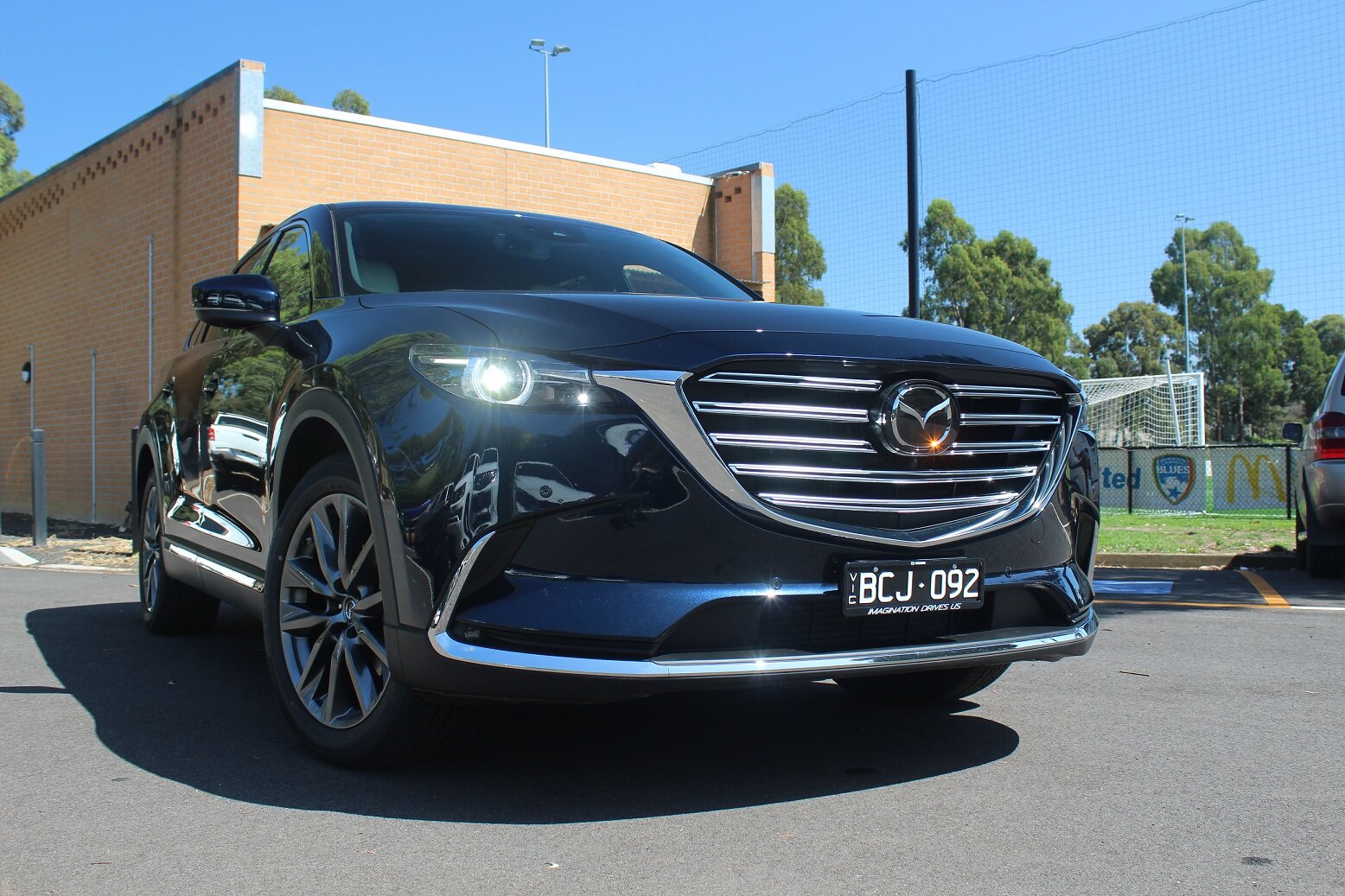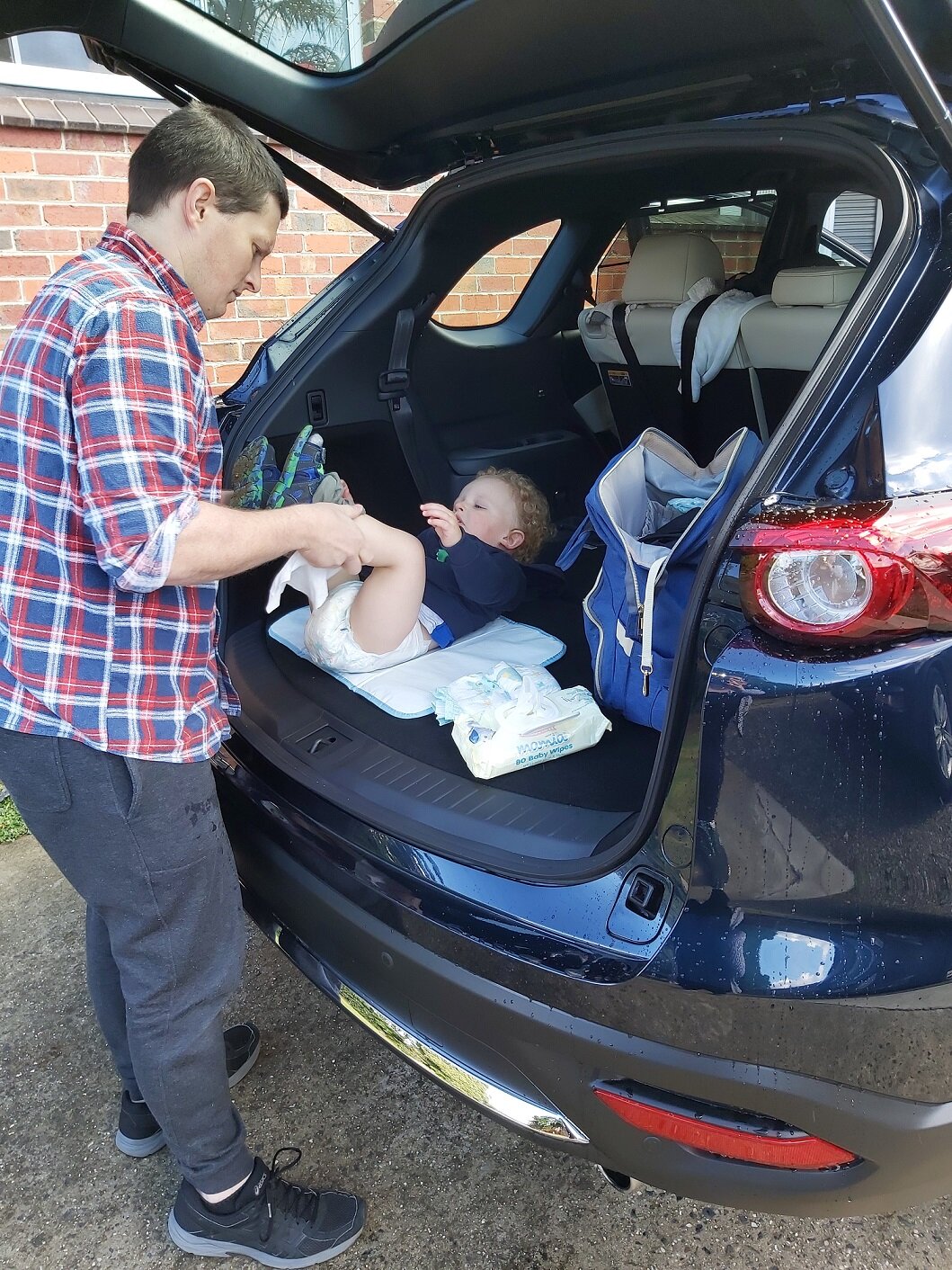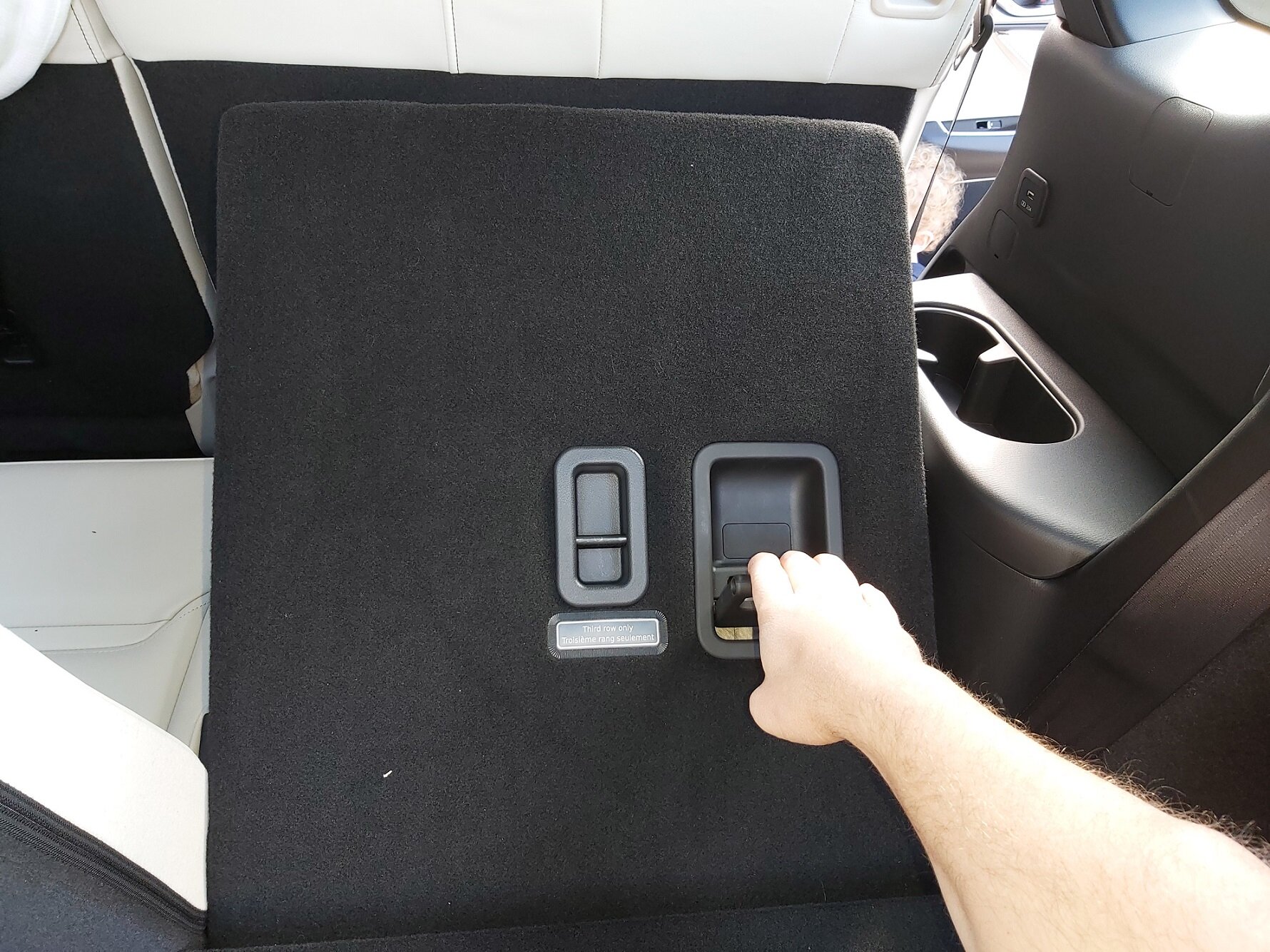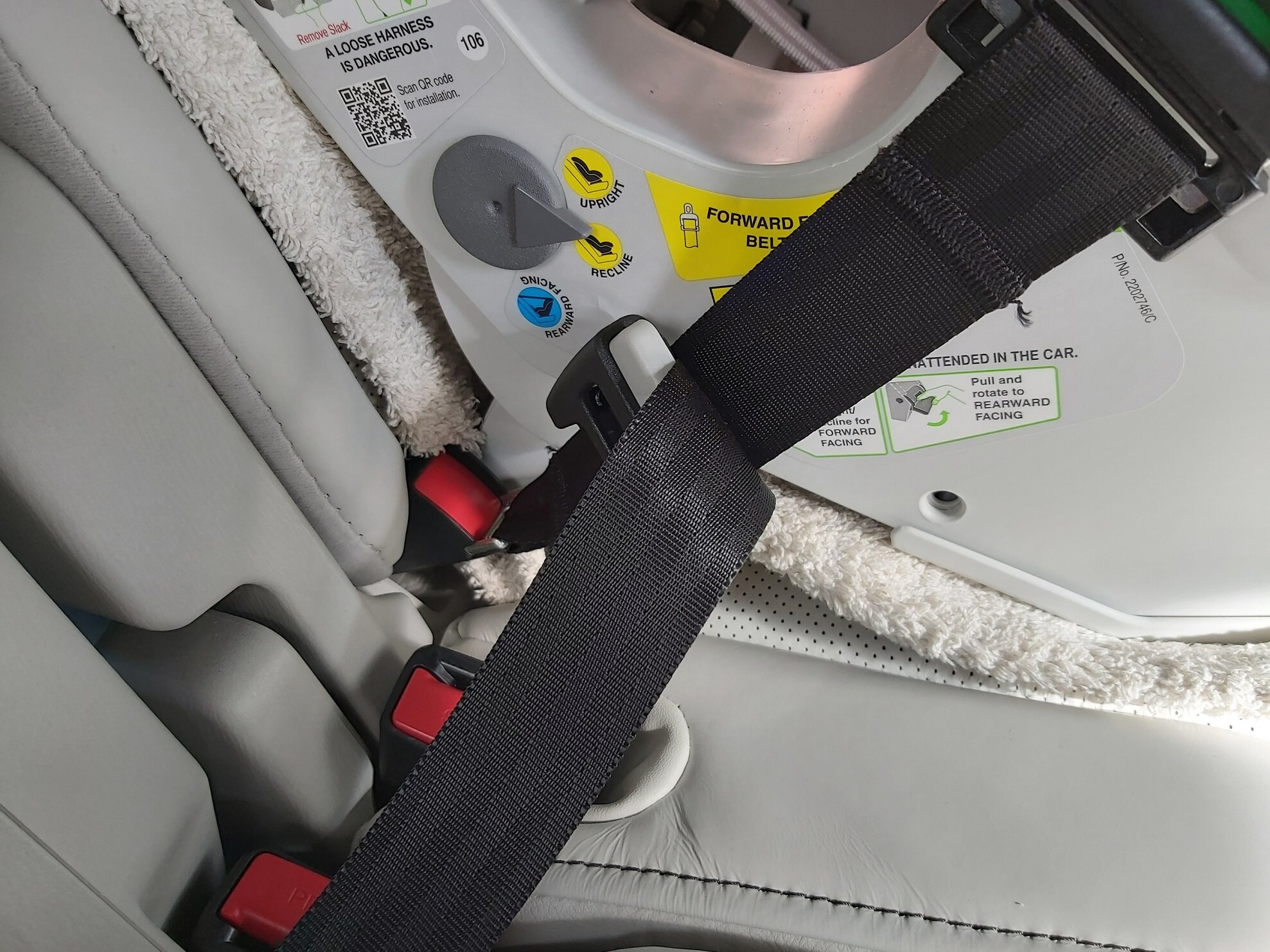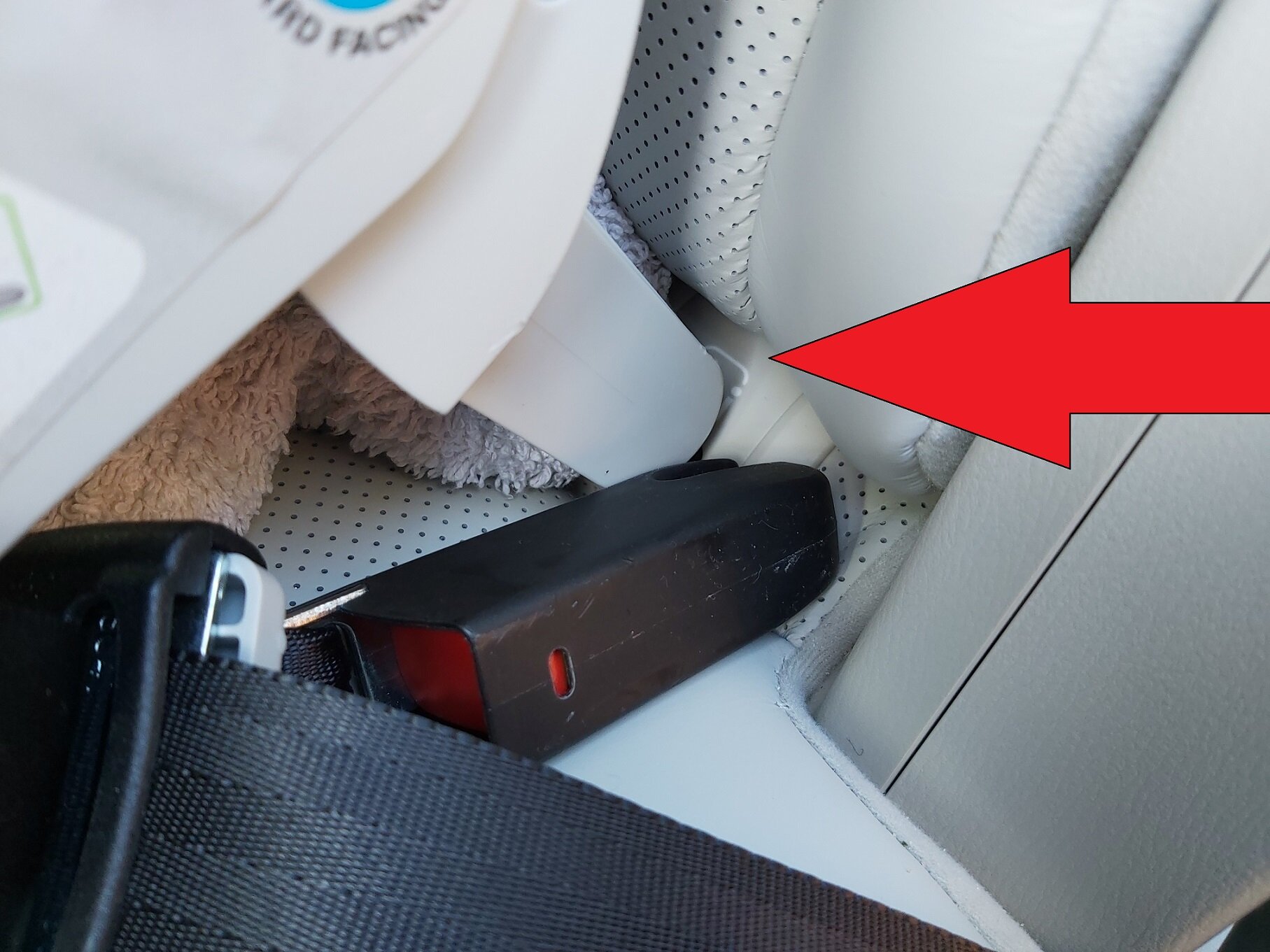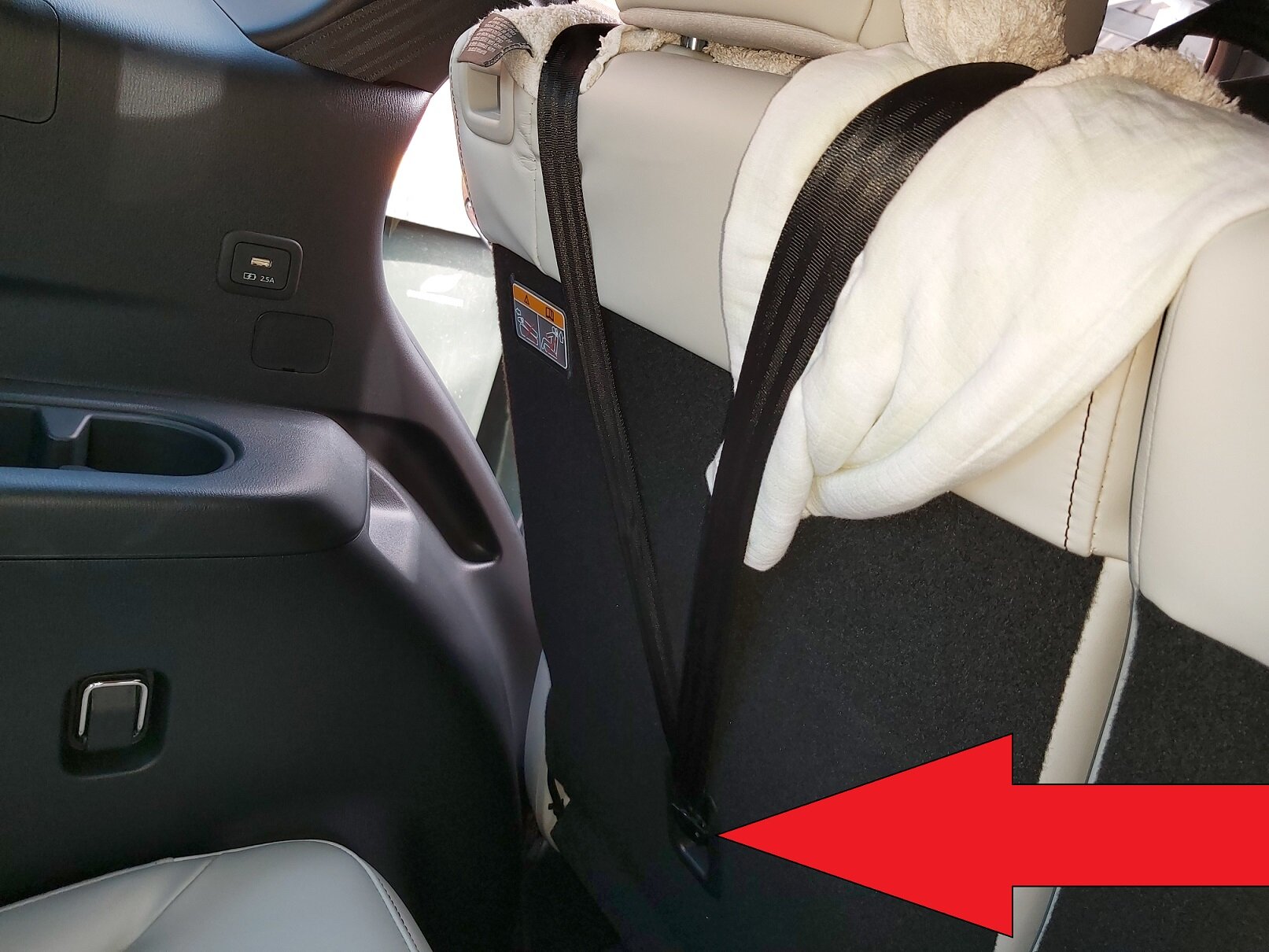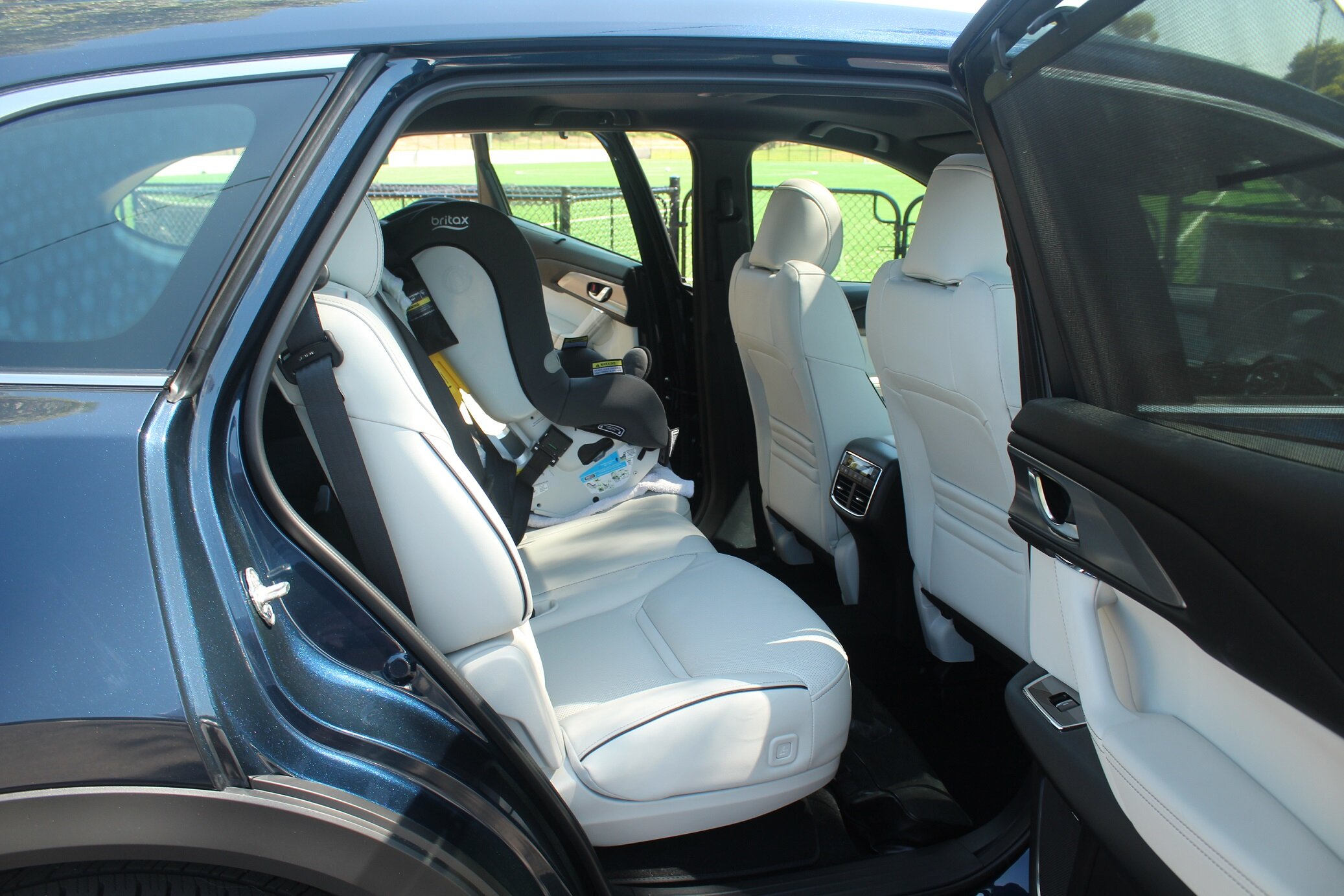Mazda CX-9 review and buying guide:
If you’re shopping for a big seven-seat SUV with all the mod cons, you can have it all in the Mazda CX-9. Budget permitting, it’s the affordable luxury German SUV, only built better (in Japan).
We need to start by talking about performance, not typically the primary concern of anybody buying a big seven seat SUV.
But performance is important in this category because these vast seven-seat SUVs are heavy well and truly before you put yourself, the kids, their scooters and (what feels like) 30 bags into the footwells.
CX-9 tips the scales at just under two tonnes with a full tank of fuel.
Fortunately the CX-9 is no slouch. In fact, it’s actually really satisfying to drive - one of the very few things left to enjoy in the world once kids enter the fray. (I’m joking, obviously).
Reason being for the delightful driving experience, is the 2.5-litre SkyActiv-G four-cylinder turbo petrol engine under the long bonnet, which is seriously punchy.
Whereas many petrol engines offer their power at higher revs, the CX-9’s full 420Nm of torque can be felt at just 2000rpm (thanks to the turbo), and its 170kW of power comes in at at 5000rpm.
CX-9 doesn’t move like some soft, lazy lard-arse. It behaves like a V8 Clubsport - or something. And this is a wonderful thing when your world is surrounded by nappies, crumbs in every crevice, and three cups of coffee per day.
Mazda is in such a strong position these days, especially because of its engine technology which is arguably the best in the business. Their engines have found another level of efficiency (in the combustion process) that makes them feel lively and responsive and zippy. I don’t know how else to describe it to you without becoming some self-gratifying wanker journalist.
Anyway, Mazda engines: really nice to drive. You should genuinely take one for a test drive on a weekend if this is where you’re shopping.
The Mazda CX-9 Azami was loaned for a week courtesy of Mazda Australia.
Other options to shop for…
I also highly recommend taking the Kia Sorento and Hyundai Santa Fe for a test drive if you have the time and live in outter suburbs with a lot of freeway or backroad driving. CX-9 also competes in the market with the Toyota Kluger, which outsells the Mazda substantially, but I would put to you, that for the same money, the CX-9 is a much, much nicer vehicle to live in every day, and I have friends who got a mid-range CX-9 variant and would testify in an open court. Kluger is also quite an old vehicle and feels more like a fishing trawler to drive.
Also, depending on your situation, you might also like to try the slightly smaller Subaru Outback or Forester just for comparison; they use a permanent all-wheel drive system that splits the engine’s power between all four wheels. If you live up a steep driveway in a leafy, hilly area, all-wheel drive might be a good idea for when things get wet, and they also have a nice burbling soundtrack (thanks to the boxer engine layout) which some people like. Being strictly five seaters they also have serious cargo space, and Outback comes with built-in roof racks.
THE CX-9 RANGE
Here’s how the pricing and range looks like on the CX-9 at the moment, in 2020. I suggest look at what you can afford, and if you wanna save some money, consider what features you can live without. Or, see which features are a must-have and decide from there. I think the Touring is the best value for money if you’re not dripping with cash; it offers some niceties like heated seats, but doesn’t go excessive with the pumping Bose stereo, sunroof or flashier wheels. But if you’ve got $70k threatening your personal well-being, mic-drop it on the full-fat Azami and get cooled seats, walnut leather and the fat beats.
Either way, CX-9 is an expensive vehicle, so try to be rational about important features to you based on your budget. Rough pricing:
CX-9 Sport: (FWD) $53,000 or (AWD) $57,000
Standard features:
Auto emergency braking with forward collision warning
Lane departure warning
Adaptive cruise control
Apple CarPlay and Android Auto + satnav + 7-inch touchscreen + 6 speakers
Reversing camera and parking sensors
Seven seats with third-row airbags
18-inch alloys, tyre pressure monitoring
Heated, folding electric mirrors.
CX-9 Touring: (FWD) $60,000 or (AWD) $64,000
Includes:
Proximity key
Front parking sensors
Heated front seats with partial leather (front) + driver lumbar adjustment
LED foglamps
8-inch touchscreen
CX-9 GT: (FWD) $70,000 or (AWD) $75,000
Includes:
Sunroof
Bose® Audio
20-inch Alloy wheels
CX-9 Azami: (FWD) $73,600 or (AWD) $77,800
Includes:
Adaptive LED headlights
Walnut nappa leather seats
Ventilated/cooled front seats
CX-9 Azami LE - $80,400 (AWD)
Includes:
2nd row captain's seats with power adjust and ventilation function
2nd row centre console with cup holder
You’ll be paying Luxury Car Tax on Azami LE
FIGHTING FIT
Naturally the first thing I did with CX-9 was install my son’s child seat into the passenger outboard rear seat.
This showed me how easy or hard it is to reach top tether points, isofix points and generally manoeuvre in and around the vehicle in the real world.
I found the seat installation was dead easy. Unlike my Outback, the isofix points aren’t hidden behind fabric covers, they’re beneath plastic push-in covers, between the base and seatback, ready to go. Although I would question whether kids might fiddle with them and possibly break them or insert something one millimetre to big into the hole. I also recommend to always use a towel under a child seat to reduce the friction on your beautiful leather seats - you’ll be glad you did when it comes time to on-sell it.
You may have to double check the space between isofix points will suit the stabiliser bar on your respective child seat (as you should with all cars/child seats FYI). Mine fits perfectly between, using a Britax brand seat.
The top tether was hard to reach over the top, as I have average length arms, and the clip point is right down the bottom of the seat back. If you’re average height, you’ll have to kneel on the seat and reach over to clip the tether into place, or go via the boot which is a pain in the arse if you’ve packed things, or have the third row up. If you’re of decent height, you won’t have an issue.
The third row is pretty easy to deploy with the lift of a handle they both topple into the floor or clunk into place with ample legroom up to the ages of about 10, I’d guess.
CX-9 has a pretty long wheelbase at 2.93 metres. Wheelbase is the primary indicator for cabin space because passengers sit between the wheels in rows one and two. The new Hyundai Santa Fe and Kia Sorento will roll on a 2.76m wheelbase, the Kluger is 2.79m, the Volkswagen Toureg is 2.89m (and starts at a massive $80k before on-road costs), and the Jeep Grand Cherokee is 2.91m (but doesn’t offer seven seats).
I particularly appreciate in the CX-9 being able to sit in a somewhat more elongated, reclined posture thanks to the great driving position enabling you to have your legs out forward, the seat slightly raised and the backrest a touch tilted back, and the steering wheel out. It kinda feels like you’re sitting in a sedan, but up higher. Unlike many SUVs which force you to sit more upright, meaning your heart has to work harder to pump blood vertically, rather than horizontally.
So, your heart doesn’t have to work as hard, you can concentrate better and for longer, with less likelihood of fatigue becoming an issue. I certainly felt very relaxed and alert, not strung-out.
ACCESS GRANTED
When you are running in five-seat mode, which I presume will be most of the time, you can access the third row via a single button-push on the side of the second-row seat which folds the back forward.
You can also recline the seat back for especially tall adults, or for a snooze on the long trip home from the beach or wherever. And they are seriously nice to sit in. The side bolsters are chunky and will support even the bulkiest shoulders, and when you do fold down the second row, it doesn’t feel like the payload you put on top of them, is going to squash the leather into stretching itself. (I’m always conscious of putting significant weight in the back in this way).
The CX-9’s got a really good boot space, with dimensions that read thus:
1641 litres, second row down, measured to roof;
810 litres, second row seats up, measured up to roof;
230 litres, third row seats up, measured up to roof.
Those numbers are pretty good. It’s rivals look like this:
Current (outgoing) Santa Fe: 130L / 547L / 1647L';
Toyota Prado: 120L / 620L / 1833L;
Toyota Kluger: 195L / 529L / 1872L;
Kia Sorento: 142L / 605L / 1662L
Subaru Outback: N/A / 512L / 1801L;
Unfortunately, the advantage to CX-9’s boot space in volume is because of its overall length and width, which is substantial.
It measures 5075mm long. And it’s those crucial 300mm or so right at the end of the boot space which makes such a difference to storage space behind the third row. The way the boot closes and its shape is bulbous enough to allow tall headrest and a gulp of area to put school bags or maybe even a reasonable sports bag is really good.
But externally, you must be aware, it’s over five metres long, this car. So it will use every skerric of space in carparks, your driveaway, and - crucially - your garage. Because it’s also two metres wide including the door mirrors.
And it’s 1747mm tall including the roof rails. If you even put a slimline luggage pod on top, you’d best avoid any drive-thru take-away or underground carparks. (So easy to forget when you’re on holiday). Kia Sorento is a big car and it’s 1690mm tall, Mitsubishi Pajero Sport is 1835mm high and a LandCruiser 200 Series is 1.9m high.
There’s also a pro and con situation to the CX-9’s front, and in particular, rear doors when you are parked and entering/exiting the vehicle with kids.
The doors open really wide, which is awesome, because you’re not going to have the issue I have getting in and out of my Outback or the RAV4 with doors that don’t open wide enough to pull toddlers out of a child seat, with elbows and feet flying about, begging to thump the door into the neighbouring wall/post/car.
So, brilliant hinge design from Mazda on that front. However, the catch is: you have to be seriously careful not to therefore belt that lovely paint on your CX-9 door into an object because it opens so wide. It’s a first-world problem, I know, but it’s a double-edged sword to new car ownership. Yes, it’s awesome the doors open wide for all those times you have clear space either side, like at home for example. But equally you have to watch the wind doesn’t catch them, or that nobody bumps them further open into something. This is why I’m pathological about parking in corner spaces, to reduce this and other risks of damage.
Drawbacks
At the risk of sounding repetitive, the primary drawbacks to the CX-9 are the cautions I’ve already mentioned.
She’s big. Top tethers are a bit hard to reach. Doors open wide, for better and worse.
But there’s a big problem with the reversing camera. It’s pretty poor at actually depicting clearly and in relative terms the dangers of the world surrounding you, despite offering a 360-degree camera system.
For some reason, there are four black corners on the graphic display of the vehicle, relative to each corner of the car. But that’s not what you need when reversing into a tight spot and you have the parking sensors beeping away guiding you in.
You need to see exactly where the rear corners of the vehicle are at all times, not just the primary rear-view directly behind.
It is so easy to lose an object like a post or tree or kerb or a piece of chain linking posts together. So easy in such a big car, when you’re watching your mirrors don’t collect something like the concrete pillars in Aldi, or the lamp post etc, praying the granny in the car beside you doesn’t open her door at the crucial moment. You need to know exactly where you’re placing the CX-9’s caboose.
It’s not horrible, it just needs improvement. And you might find this doesn’t bother you, or it’s a quirk you can compromise on for the sake of having the prestige of a German luxury SUV with Japanese build quality, reliability and that engine.
I certainly think I could learn to adapt, as I did over the week I loaned it. Perhaps you will too. Same goes for the MZD Connect rotary dial to control the media screen. It took a while to figure it out, and you should be very careful operating it in traffic. The ergonomics aren’t superb here, because you need to find the ‘Back/Return’ button to revert to a previous screen, which can be hard to do when you’re navigating a turn or watching for morons. I personally prefer a big-icon touchscreen with logos and tabs that require one quick glance to locate and stab with a finger.
Oh, I also think the clever split-folding centre armrest could be one of those features kids play with and break by repeatedly playing Jack-In-The-Box with. So I’d watch for that.
And lastly, just in general I felt the cockpit, where the Captain and First Officer do their best work transporting the future workforce here, there an everywhere, it seems a bit sparse on storage for your essentials. Wallet, phone, keys, hand sanitiser, the confiscated toy, sunnies - whatever.
I think an additional storage bin along the centre transmission tunnel would’ve been a bonus. Again, it’s not a criticism that should scratch CX-9 off your list, just another observation you can probably live with.
Summary
The CX-9 does so much right, it’s hard to criticise it without seemingly like I’m nit-picking, and likewise, it’s easy to think it can’t possibly be that good, I’m biased.
But for $70,000 would you want your CX-9 to be awesome? Or do you want me to manufacture faults?
The front-wheel drive version is going to be more than ample for 90 per cent of buyers, I reckon, so hold onto the extra cash and don’t go for all-wheel drive unless you have a specific need for it: dirt driveways, steep wet hills and trips to the snow are a way of life for you and your family.
CX-9 is pretty lush, so I would suggest making sure it’s the first car you test drive if you’re not stressed by budget and you’re even entertaining the idea of shopping in the premium section of brands, like Land Rover, Mercedes or Volkswagen.
CX-9 even offers a seriously good two-tonne towing capacity (with a 150kg towball download limit), so you should negotiate a towbar installation with your dealer, which will increase the versatility significantly.
Above all, you need to remember that such a big, heavy SUV means tyres will be a bit pricey, but it’s probably not too bad considering you’re shopping for a $50k-plus SUV. And your first three services will be at 10,000km / 12mths ($363), 20,000km / 24mths ($408), and 30,000km / 36mths ($363).
CX-9 is a great blend of affordability and practicality mixed with what I would argue is class-leading luxury. Sure, other models have leather, others are quiet, some look as good as the CX-9 does from outside, and there are other seven-seaters with AWD, a sweet engine and silky smooth transmission. There are other reliable brands with excellent build quality and good customer care.
But you have to shop really hard, spend more or sacrifice something to have all those strengths in one.
Is there anything in particular you want to know about the Mazda CX-9? Send me an email and I’ll get back to you ASAP.


